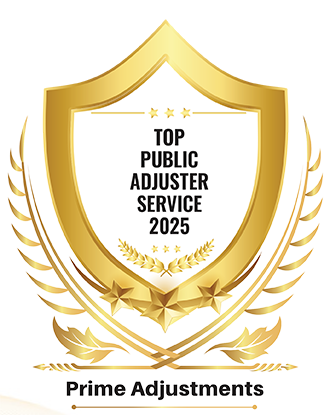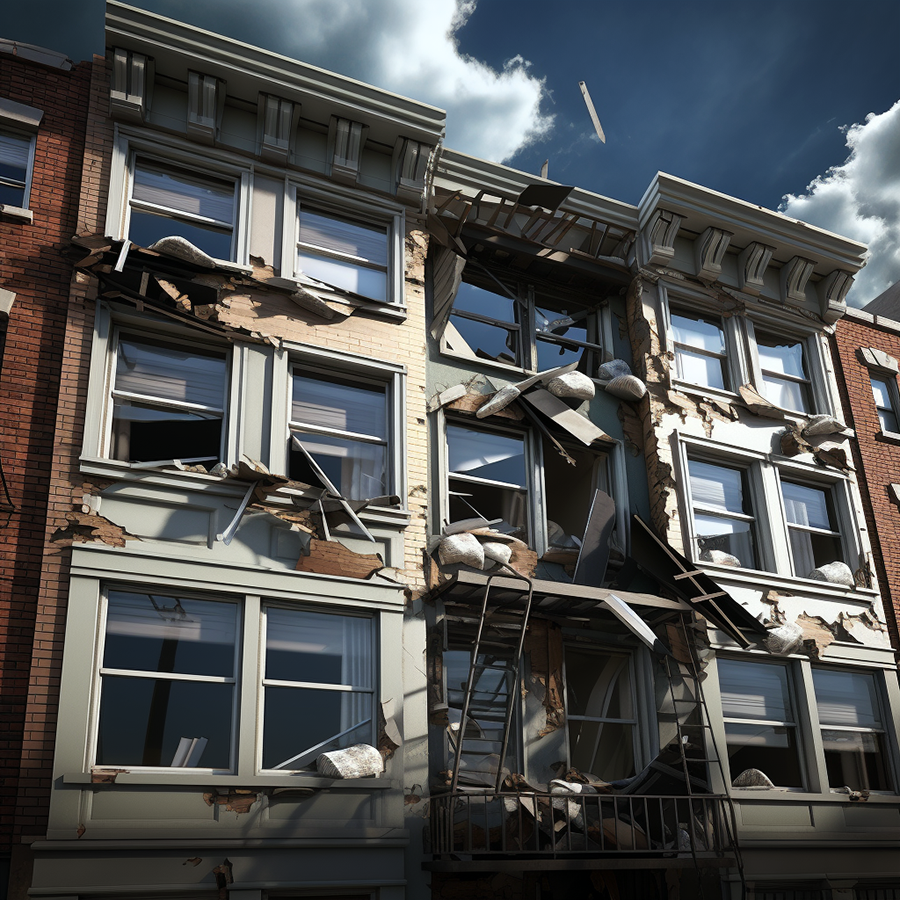Extending recoverable depreciation is not always a sure thing. I received a call last week from a policyholder in Aurora Colorado who needs to extend their time to receive their recoverable depreciation. A suspect was apparently running from law enforcement and barricaded himself into a rental property. In efforts to get the suspect out of the house they used bullets, tear gas, flash bangs, sprayed water into the house and finally rammed a tank into the front of the house to extract the suspect. As you can imagine the damage to the property due to the police was significant but necessary in their apprehension of their suspect.
This is a covered loss and the insurance company created an estimate that they believed to be the amount of loss. Damage done by law enforcement on a raid is considered a covered loss unless the policy excludes it. On a side note, most policies exclude acts of war. If you’re in a situation where you property was damaged by law enforcement contact our public adjusters for a free claim review.
After delays in receiving the ACV payment, building permitting and selecting a contractor time had passed by. The ACV payment is an actual cash value payment paid to the policyholder. Once the policyholder has completed the work, they are to receive the full RCV amount, replacement cost value. The policyholder had a RCV policy so once the work is completed, they will receive the depreciation back to equal full replacement cost.
Recoverable depreciation refers to the portion of an insurance claim payment that is initially withheld by the insurer but can be reclaimed by the policyholder after completing repairs or replacement of damaged property. Extending recoverable depreciation typically involves requesting an extension of the time period allowed by the insurance company for completing repairs or replacement.
As time went by with delays in payment and construction, the insurance company issued two separate extensions giving additional time for the build back of the property to be completed. Work has been completed and the policyholder now is submitting her invoices from the contractor to the insurance company. The insurance company paid for the first 2 invoices but going forward would not pay out the RCV unless they had a detailed itemized invoice from the contractor. The policyholder was trying to do all the work within the amount paid by the insurance carrier. To achieve this the policyholder hired a one-man contractor that could not provide a detailed estimate. However, this contractor was certainly cheaper.
By this time there’s a week left on the depreciation extension and the policyholder reached out to us. A quick review of the policy showed that they are time barred from pursuing legal action to recover the depreciation. They are also time barred from requesting appraisal. There was nothing we go do in that short amount of time paired with being called so late into the claim process. The insurer did not extend the time limit for a third time. It’s important to act expeditiously with your claim to ensure this doesn’t happen to your claim.
If we had the call much earlier in the claim process, just on a quick review, I feel the scope of work by the carrier was too low and we would have had remedies to resolve the claim for the insured. It’s important to note in this claim, having a Colorado public adjuster review your claim early in the claims process and hiring a reputable contractor is imperative to a successful claim outcome.
In closing, extending recoverable depreciation involves requesting additional time from the insurance company to complete repairs or replacement of damaged property, allowing the policyholder to fully recover the full depreciated value of the property. It’s important for policyholders to understand the terms and conditions of their insurance policy regarding recoverable depreciation and to communicate effectively with their insurer throughout the claims process. Our public adjusters help insureds through this process for extending and recovering deprecation.
What is the Doctrine of Prevention?
On commercial claims an argument by policyholders is that they were “prevented” from making repairs by the insurer’s late payment, thereby relieving the insured from its duty to actually make repairs and incur code costs. See e.g. Devonshire Real Est. & Asset Mgmt., LP v. Am. Ins. Co., No. 3:12-CV-2199-B, 2014 WL 4796967, at *7 (N.D. Tex. Sept. 26, 2014)
(the insured “argues that the equitable ‘doctrine of prevention’ relieves it of the obligation to make repairs before receiving replacement costs, because [the insurer’s] refusal to pay [the insured] the actual cash value of its second supplemental claim for damage…prevented [the insured] from completing the necessary repairs.”). This argument is called the “Doctrine of Prevention.”
Who has the burden of proof to show repairs have or have not been completed?
If a policy contains a valuation provision requiring repairs or replacement within a certain time frame—such as two years—the policyholder typically bears the burden to show those repairs were completed. Recently, in Kahlig Enterprises, Inc. v. Affiliated FM Ins. Co., No. 23-50144, 2024 WL 1554067, at *2 (5th Cir. Apr. 10, 2024), the Fifth Circuit rejected the argument that the valuation provision, which describes how an insurer will value (i.e. measure) a loss, is a limitation of liability on which the insurer has the burden of proof at trial. The court recognized that the policy’s structure applied an actual cash value measure if the policyholder did not repair, replace or rebuild within two years from the date of loss. It found that the insured bore the burden to prove those repairs and held the insured to its burden in its decision.


